The use of a Hand Scraper may be undertaken for two logically distinct purposes.
"Hand Scraping" proper is the process of using a scraper held in the hands to remove small amounts of metal from a precision surface so as to provide an accurate bearing surface to within some tolerance. (The scraper itself may be either manual or powered; the use of a power scraper is still hand scraping because the tool is held in and controlled by the hands.) This kind of hand scraping is the way in which the finest machine slideways have been produced from the early 19th century to the present. The finish it produces may be attractive in its own way, but it is functional process, not a decorative one. This kind of hand scraping is the topic of this present Notebook.
Hand scraping may also be done to produce a decorative finish on a surface. When this is done, it is often termed Frosting or Flaking (q.v.)
A type of hand scraping may also be done for the fitting of plain bearings. Although similar in name, this is in practice a quite different process which employs a different style of distinctively curved scraper. It is not discussed here.
The best photographs available of functional hand scraping are those in Michael Ward's series of articles, "Scraping for the Home Shop," in The Home Shop Machinist .
flickr user NVinacco ( http://www.flickr.com/photos/nvinacco/) has posted four lovely photographs of hand scraped work. All of the items in them (both the block and the surface plate) were scraped using a carbide scraper. (Please note that these are licensed by him under the Creative Commons Attribution-Noncommercial-NoDerivatives 2.0 license, a license which differs from that of the rest of this page. Please respect this.)
There are more sources here than you need. Start with these:
(From Popular Science Monthly, Vol. 32, No. 4 (February, 1888): frontis. Here is an extract of the "Sketch of [the life of] Sir Joseph Whitworth" from pp. 550-553 of this number: popular-science-monthly-vol-32-no-4-1888-02-pp550-553-whitworth-woods-hole-archive-org-popularsciencemo321888newy.pdf (I've assembled it from the original scans, without image editing; it's 105 Megabytes but just a few pages.) This volume has been digitized by the Marine Biological Library of the Woods Hole Oceanographic Institute and is available via The Internet Archive at http://archive.org/details/popularsciencemo321888newy and the Biodiversity Heritage Library at http://www.biodiversitylibrary.org/ia/popularsciencemo321888newy )
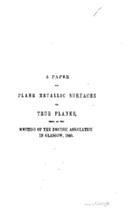
1840. Whitworth. British Association. [1856]
It all starts here. This is Joseph Whitworth's 1840 paper presented to the British Association at their meeting in Glasgow. If what Whitworth presented here had never been developed, progress in technology would have stopped in the 1830s.
It is interesting to note that at this early date the marking compound Whitworth suggests is "red ochre and oil."
The version here is the one reprinted by Whitworth in his Miscellaneous Papers on Mechanical Subjects (London: Longman, Brown, Green, Longmans, and Roberts, 1858), pp. 3-19, as "On Plane Metallic Surfaces or True Planes." Presumably this is the version that he would have wished remembered. The icon at left links to a local copy of the Google Books digitization of the NYPL copy of the entire volume. This version, however, isn't necessarily the paper exactly as it was presented. The next few items address this issue.
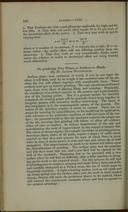
1840. Whitworth. [1840 BA Report]
It isn't entirely clear to me how Whitworth's paper was first published. The format of what later became the "Proceedings" of the British Association wasn't standardized at this time, and I don't even know if there really was a published "Proceedings" for the 1840 meeting. The official presentation of the BA's Proceedings, online at http://baas.research.glam.ac.uk/ covers only 1831 - 1835. However, there was a series of published "Reports" for this period. The Report of the Tenth Meeting of the British Association for the Advancement of Science; Held at Glasgow in August 1840 (London: John Murray, 1841) is online on the marvelous and underappreciated Biodiversity Heritage Website, at http://www.biodiversitylibrary.org/bibliography/2276/. This volume was contributed by the Natural History Museum Library, London. It includes a separately paginated supplement, "Notices and Abstracts of Communications to the British Association for the Advancement of Science, at the Glasgow Meeting, August 1840." Page 192 of this set of "Notices and Abstracts" contains what appears to be a third-party account of Whitworth's actual presentation, including the exhibition of surface plates (including the phenomenon of their near-frictionless floating on each other, which is eerie to behold). That page is reprinted here (click on the icon of it, above left).
It should be observed that this account cannot be entirely accurate. It says that the scraper for producing surface plates may be "made from a three-sided file." But that would more closely resemble a bearing scraper, not a scraper for the production of plane surfaces. This casts doubt onto the correspondent's identification of "red chalk" as a marking compound (Whitworth says "red ochre," which isn't the same).
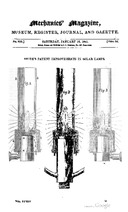
1840. Whitworth. [1841 Mechanics' Magazine]
A version of Whitworth's paper appeared in the Mechanics' Magazine, Museum, Register, Journal, and Gazette, Volume 34, No. 910 (Saturday, January 16, 1841), pp. 39-42, under the title "On Plane Metallic Surfaces, and the Proper Mode of Preparing Them; Read at the Meeting of the British Association, at Glasgow, A. D. 1840, By Joseph Whitworth, Esq." It differs in several ways from the version that Whitworth published in 1856. It is quite likely that it is a transcription by a member of the audience, with text in addition to Whitworth's.
This volume has been digitized by Google at least three times, from copies at Cornell University, the NYPL, and the University of Michigan. (Note: The Michigan copy is cataloged under a later periodical, "Iron: An Illustrated Weekly...", which absorbed this one.) The icon at left links to an extract of just this article (from the Cornell version).
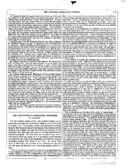
1856. Whitworth. Institution of Mech. Eng.
This present item doesn't really contribute much to this history; I cite it only to reduce potential confusion. As of late 2012, the otherwise very good Wikipedia article on the Surface Plate ( http://en.wikipedia.org/wiki/Surface_plate) says the following about their method of generation: "Joseph Whitworth described this process to the British Association in 1840 in his paper The Mode of Producing a True Plate as he related during his chairman's address in 1856 at the inaugural meeting of the British Institute of Mechanical Engineers in Glasgow." It cites as its source an article, "The Institute of Mechanical Engineers in Glasgow: Chairman's Address" from The Practical Mechanic's Journal, Series 2, No. 1: 173-175. This information has several small inaccuracies, but more significantly it is correct-but-misleading in another way.
First, the organization that Whitworth addressed in Glasgow was the Institution (not Institute) of Mechanical Engineers. The correct title of the report in The Practical Mechanic's Journal reflects this: "The Institution of Mechanical Engineers in Glasgow".
Second, it is not entirely clear that the title of Whitworth's 1840 paper is cited correctly. In his 1856 IME address, he says only "I may mention that it was at the meeting of the British Association, held in Glasgow in 1840, that I read a paper on the mode of producing a true plane, to which I would refer those desiring information on the subject." He does not actually cite the title of the paper, and the title as it appears in his Miscellaneous Papers on Mechanical Subjects is different than the title quoted in the Wikipedia article.
However, these are quibbles (though what is a surface plate itself but the result of a method of corrections of fine details?) The real issue with this report in Wikipedia as it presently stands is that it says something correct but misleading. Whitworth's actual paper was not in 1856, not in the address cited, and not reprinted in the source cited. Rather, it dates from 1840 and is not itself cited as a reference. It would be better to cite an actual printing of the original paper (as, for example, in Whitworth's Miscellaneous Papers on Mechanical Subjects ).
The icon here links to an extract of the report on the Glasgow meeting of the IME from the Google Books scan of the University of Virginia's copy of The Practical Mechanic's Journal, Series 2, No. 1: 173-175. Note also that this same address to the IME is reprinted by Whitworth himself in his Miscellaneous Papers on Mechanical Subjects ).
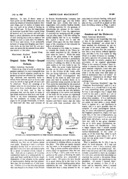
1898. Griffin. American Machinist
This is a short letter by C. O. Griffin to American Machinist, Vol. 21, No. 28 (July 14, 1898): 29 (p. 525 of the original volume; image 640 of the PDF here). It defends the process of hand scraping quite eloquently, but in doing so provides evidence that even at this date hand processes had come under question.
The icon here links to a single page extracted from the Google Books digitization of the Stanford University copy.
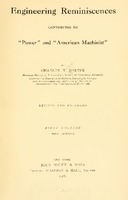
1908. Porter. Engineering Reminiscences
Chapter 21 of Charles T. Porter's Engineering Reminiscences Contributed to "Power" and "American Machinist (NY: John Wiley and Sons, 1908) is devoted to the method of the "Production of an Original Surface Plate."
The icon at left links to an extract of just this chapter from the digitization of the Northeastern University Snell Library copy of this work, available at The Internet Archive. See http://www.archive.org/details/engineeringremin00port/ Note that out of laziness I have made this extract from the PDF version; the DjVu version on The Internet Archive is much nicer. Below, because it may be handy to someone, is the page containing the drawing of a surface plate extracted from the original scan data:
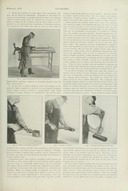
1911. Fairfield. Machinery.
Fairfield, H. P. "Hand Scraping." In the "Machine Shop Practices" column of Machinery, 1911.
Note: Machinery seems at that time to have been published in three distinct editions: "Engineering," "Shop," and "Railway." This article appeared in the Engineering Edition, Vol. 17, No. 5 (February, 1911): 474-476. It may also have appeared in the Shop Edition (Vol. 17 [, No 5 (February, 1911) ?]: 314ff) and in the Railway Edition (Vol. 10 [, No. 5 (February, 1911) ?]: 474ff.)
The Engineering Edition (Vol. 17) has been digitized by The Internet Archive from the University of Toronto copy. This is available online at: http://www.archive.org/details/machinery17newy There you can view it online, or download PDF or DjVU versions, or download the original scans. The icon here links to a PDF assembled from the original scans of just the three pages of Fairfield's article.

1917. Machinery's Encyclopedia
A.S. "Scraping Machine Parts." in Machinery's Encyclopedia. Volume V. (NY: The Industrial Press, 1917)
This article covers a broad range within the subject. Part of it covers ordinary functional and decorative scraping (and part of that, in turn, is recycled from Fairfield's 1911 article as noted above). But part of it also deals with the dragging of heavy machine elements against each other to diagnose their bearing surfaces.

1924. Wheeler. Popular Science.
Wheeler, H. L. "How to Scrape Metal Surfaces." Popular Science, Vol. 105, No. 3 (Sept. 1924): 84, 86, 88. Viewable online via Google Books.
While this article is good in its own way, it tries to cover the entire field in a couple of pages (including regular hand scraping, bearing scraping, and frosting). It is of particular interest, though, because (a) it shows an unusual method of sharpening the hand scraper which involve a diagonal cutting surface on the end of the blade (of a scraper with a convex cross-section), and (b) it shows three patterns for frosting: "crescent," "diagonal diamond," and "straight diamond."

1955. Connolly. Machine Tool Reconditioning
Connelly, Edward F. Machine Tool Reconditioning. (St. Paul, MN: Machine Tool Publications, 1955). This book has an almost legendary status. It is perhaps the most thorough book on the subject ever written. Note, however, that while it does discuss the methods of hand scraping its primary concern is with their application to machine tool reconditioning. Most of it, therefore, is devoted to analyzing and correcting faults in machine tool geometry.
This book is still in print, although it is not inexpensive.

1970. Moore. The Foundations of Mechanical Accuracy.
Moore, Wayne R. The Foundations of Mechanical Accuracy. (Bridgeport, CT: The Moore Special Tool Company, 1970.) This book can still be bought direct from the writer's company (now the Moore Tool Company, http://www.mooretool.com/publications.html)
The Moore jig borers and coordinate measuring machines were the finest ever made; this is how they got that way. Only a small portion of the book concerns the mechanics of hand scraping, but it remains an essential volume for anyone concerned with the accuracy of machines.
(If anyone ever tells you that three plates are used to generate an original set of surface plates because "if two plates are equal to a third they must all be planar" (or the like), this is the volume to which to direct them in order to dispel this oversimplification.)

1981. Wade. The Art of Hand Scraping
Wade, Robert R. The Art of Hand Scraping. (Berkeley, CA: Lawrence Livermore Laboratory, 1981). This booklet focusses primarily on pull scraping, a method not frequently discussed elsewhere.
The original of this paper is in the public domain due to failure to comply with copyright formalities at the time of publication. At the present time there are two copies of it online. One is a single file at http://users.beagle.com.au/lathefan/ The other consists of three files at: http://barneyfest.com/pics/scraping-01.pdf, http://barneyfest.com/pics/scraping-02.pdf, and http://barneyfest.com/pics/scraping-02.pdf. The exact provenance of each is difficult to determine. Both versions are scans of a photocopy (not of an original printed version), so the illustrations in both are of poor quality. There are minor differences between them, but it would appear likely that both are scans of the same photocopy.

Lenzi, 1996
Lenzi, Richard. "From 'Rule of Thumb' to Specialized Craft Knowledge: Hand Scraping in the Machine Tool Industry." in Tools and Technology: The Newsletter of the American Precision Museum (Summer 1996): 1-5.
This is a good summary of the place of scraping in the history of engineering and business, with a useful bibliography.

2000. Morgan. Basic Scraping, Modern Methods
Morgan, Michael. Basic Scraping, Modern Methods (published by the author). There is a companion video, Basic Hand Scraping. See: http://www.machinerepair.com/
Morgan gives a good introduction to the practical sharpening and handling of the scraper.

2003. Forrest Addy. (Online)
There are any number of discussion threads on the Internet about hand scraping - some more useful, some less. When the name Forrest Addy comes up, though, it is wise to pay attention. In particular, I find a posting that he made to the "homeshopmachinist.net" forums on 2003-12-22 to be particularly useful. It is a part of a thread at http://bbs.homeshopmachinist.net/archive/index.php/t-4673.html

2008- . Nick Mueller. (YouTube)
Nick Müller ( Müllersche Motor-Manufaktur München) has made several videos of hand scraping procedures available via YouTube (along with some spirited commentary on the nature of the modern international machine tool industry). See: http://www.youtube.com/user/MuellerNick/

2011- . Ward. Home Shop Machinist.
As I write this in 2012, Michael Ward has been writing an extended series of articles, "Scraping for the Home Shop," in The Home Shop Machinist. It is an extraordinary series which, in my opinion, has already become the modern standard reference for practical shop work in this field. I very much hope that it is reissued in book form.

2012. "K&J Scraping: Training Video"
K & J Scraping ( http://www.kjscraping.com) have posted a video to YouTube showing scraping procedures. It is interesting in that it shows the use of not one but two spotting compounds (neither fully identified) for improved clarity. See: http://www.youtube.com/watch?v=nOJrhrne80s
There are other videos online on YouTube as well.

2013. "Peregrin" ( metalscraping.com)
"Peregrin" has put together a good website on hand scraping, metalscraping.com. He also offers for sale an expanded version of this material in CD-ROM format. It is an excellent presentation of the subject. (And he describes the construction of a "sensitive adjustable level" which I'm just going to have to make - it's brilliant.)
Manual hand scrapers are still made by A & W Precision in Rockford, IL (who purchased this product line from the original Anderson Brothers firm). http://www.andersonscraper.com/
Power hand scrapers (Biax brand) are sold in the US by Dapra. They also carry three water-soluble spotting inks (blue, red, yellow) and Prussian Blue. They don't have any online ordering (as of 2012). You have to call them (but they were very helpful when I did call, even with a tiny order that barely met their $50 minimum). http://www.dapra.com/biax/scrapers/accessories.htm
Prussian Blue itself is simply a pigment (ferric ferrocyanide); the versions of it that you can get either as paint or as fitting compounds under the name "Prussian Blue" consist of this pigment mixed with various carriers, such as petrolatum. (The MSDS for Permatex® 35V Prussian Blue Fitting Compound is quite interesting in this regard.) Actual commercially pure powdered Prussian Blue pigment is available from some art supply companies, such as Daniel Smith ( http://www.danielsmith.com/)
Blue "hi spot" fitting compound is available from ordinary industrial suppliers. McMaster-Carr carries it by type, but does not specify exactly which product you will receive. As of late 2012, MSC carries both Dykem® Hi-Spot Blue and Permatex 35V Prussian Blue.
Discussions online suggest that the fitting compounds tend to leak out of the crimped end of their tubes. So far, I've been lucky - but it might not hurt to keep them stored in such a way that a leak presents no problems.
The four photographs by flickr user NVinacco are copyright by that person and licensed by them under the Creative Commons Attribution-NonCommercial-NoDerivatives 2.0 license. Note that while their use here is within the terms of this license, it is more restrictive than the licensing terms for the rest of this page. Please respect the terms of the license under which NVinacco released these photographs.
The 1888 volume of Popular Science Monthly is in the public domain, as is the digitization of it by the Woods Hole Oceanographic Institute. The extracts from it reprinted here remain in the public domain.
Whitworth's 1856 Papers on Mechanical Subjects is in the public domain, as is the digitization of it by Google. The extracts from it reprinted here remain in the public domain.
The 1840 British Association "Report" is in the public domain, as is the digitization of it by the Biodiversity Heritage Library and the Natural History Musuem Library. The extracts from it reprinted here remain in the public domain.
The 1841 volume of Mechanics' Magazine is in the public domain, as is the digitization of it by Google. The extracts from it reprinted here remain in the public domain.
The 1856 volume of Practical Mechanic's Journal is in the public domain, as is the digitization of it by Google. The extracts from it reprinted here remain in the public domain.
The 1898 volume of American Machinist is in the public domain, as is the digitization of it by Google. The extracts from it reprinted here remain in the public domain.
Porter's 1908 Engineering Reminiscences is in the public domain, as is the digitization of it by the Northeastern University's Snell Library. The extracts from it reprinted here remain in the public domain.
The 1911 volume of Machinery from which the Fairfield article is reprinted is in the public domain. The digitization of it at The Internet Archive and the extracts reprinted here remain in the public domain.
The 1917 volume of Machinery's Encyclopedia is in the public domain. The digitization of it by Google and the extracts reprinted here remain in the public domain.
All portions of this document not noted otherwise are Copyright © 2012 by David M. MacMillan and Rollande Krandall.
Circuitous Root is a Registered Trademark of David M. MacMillan and Rollande Krandall.
This work is licensed under the Creative Commons "Attribution - ShareAlike" license. See http://creativecommons.org/licenses/by-sa/3.0/ for its terms.
Presented originally by Circuitous Root®
Select Resolution: 0 [other resolutions temporarily disabled due to lack of disk space]